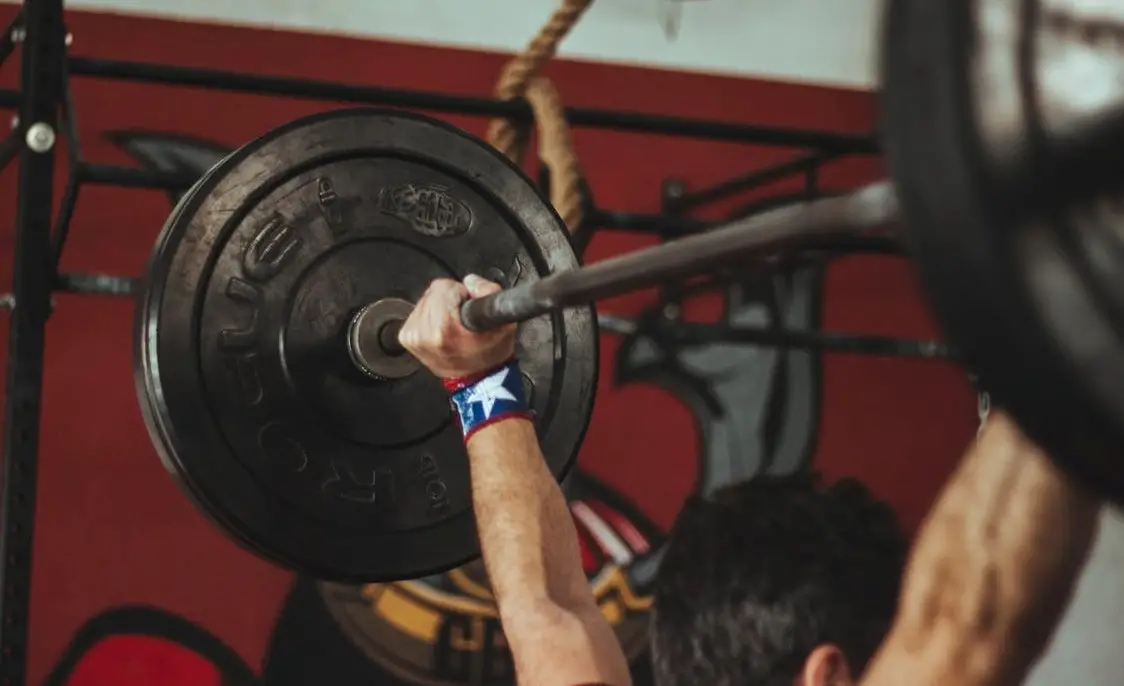The Overhead Squat WOD requires you to be both flexible and strong to succeed. These are also two general skills that don’t typically go together. This unique requirement is the factor that makes this movement quite frustrating for most athletes.
You cannot simply use brute strength alone to perform overhead squats successfully.
However, the moment you get sufficiently strong and flexible to perform this exercise efficiently, you should have no problem with this movement. It also helps that overhead squats are a prerequisite movement to achieving the full squat snatch.
The Overhead Squat WOD activates muscles in the upper body, including your triceps and deltoids.
It also activates muscles in the lower body, including hamstrings, abductors, quadriceps, and lower back muscles.
This workout is also beneficial for enhancing your mobility and improving stability.
How to Do the Overhead Squat WOD
You should first begin with your feet as wide as your shoulders. Jerk or press the barbell overhead using a wide grip on the bar. Activate your shoulder when you push into the bar. Your armpits should be facing front.
When you do the Overhead Squat WOD, you should brace your core during the workout. Move your hips down and back as you descend to the bottom of the squat. Right at the bottom, your hips should be a lot lower than your knees are.
Maintain your lumbar curve at all times. Furthermore, your heels should remain in contact with the ground during your ascension and decision phase. To help you do this, your knees should constantly remain in line with your toes during the entire movement.
The bar should be between your feet before you, then stand up tall and raise your hands to reach the full knee and hip extension.
Also check out: 4 Squat-Based WODs to build explosive power.
Snatch to Overhead Squat
To complete a snatch to overhead squat, start in a standing position with the weight locked above your head, keeping your hips open. Press into the bar, engage your core with your weight on your heels, and lower down until your hip crease falls below the knees.
Stand back up, bracing your core with the bar extended in the overhead position. Always maintain core stability when weightlifting.
Overhead squats and snatches are both technical lifts and do require a good amount of power, stability, and mobility to complete successfully. Snatches are good for power and speed development and the overhead squat requires shoulder and hip mobility.
Combined, you can increase your overall performance as an athlete and reach the peak of athleticism and strength.
Tips to Remember
- Remember to have your feet as far as your shoulders when in your standing position
- You should hold the bar at least 6 to 8 inches in an over head position with your arms fully extended over the center of your body. Your hands should be wide.
- Descend all the way so that your hip’s crease is below the knee.
- You should also ensure that your shoulders are shrugged up when you go down for the squat.
- Stand as erect as you can to finish the lift.
- Always drive up through the heels to a full standing position.
- Open your shoulder angle when you squat down. This helps you keep the bar balanced over your mid-foot
- One way to remain balanced doing an overhead squat is to look at an unmoving spot on the walk. You can mark the spot with chalk. It could also be a gym logo or mail head. The spot should be either higher than your view or on the horizon. It should never make you look down.
- This is especially true if you are lifting heavy.

